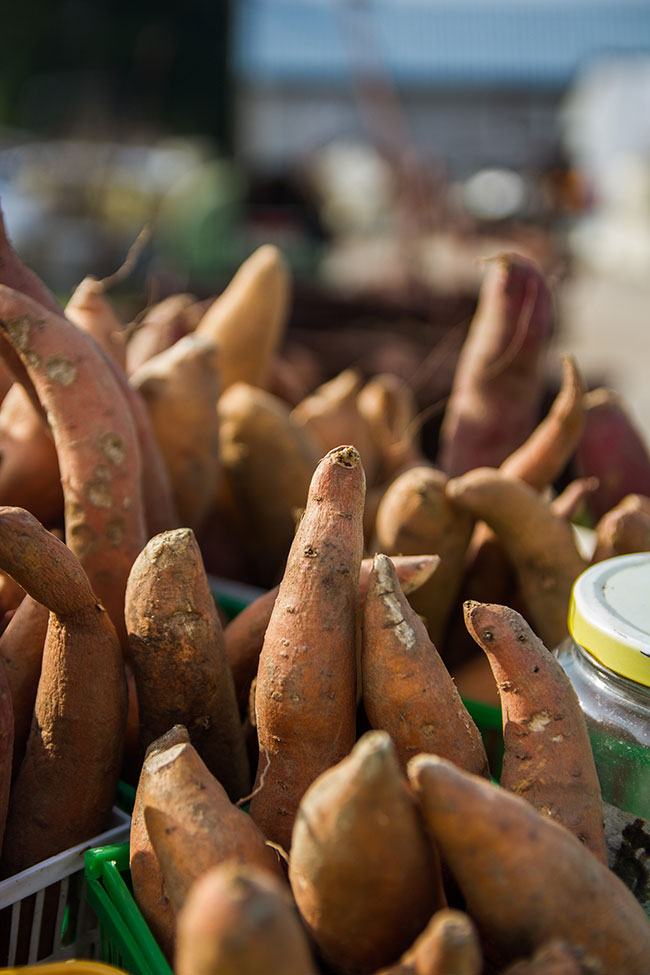
Features
Business
Marketing
Trends
A sweet opportunity for sweet potatoes
A subtropical crop that continues its climb in popularity, locally produced sweet potato slips in greenhouses could fill a rising demand.
November 3, 2020 By Michael Young
 Photo credit: Greenbelt Foundation
Photo credit: Greenbelt Foundation Sweet potatoes have risen in popularity among Canadian consumers in recent years. Ontario production meets just over 50 per cent of the province’s demand for these nutritious tubers. A recent report by the Greenbelt Foundation explains how local production could expand to meet 79 per cent of provincial consumption.
How is the US so competitive in this market?
According to Plant the Seeds: Opportunities to Grow Southern Ontario’s Fruit and Vegetable Sector report, Ontario produces slightly more than 53,000 tonnes of sweet potatoes annually. Ontario retailers carry local sweet potatoes throughout the harvest and post-harvest season and then switch to imported produce for the rest of the year. Currently, imports from the United States dominate the market during the off-season and provide stiff competition even during Ontario’s harvest season.
So, how is the US so competitive in this market? With lots of suitable land and a long growing season in the southern states, the US is able to grow a significant excess of sweet potatoes—just over 3.0 billion pounds per year. This excess product is then exported to Canada, as well as to the United Kingdom and the Netherlands, at a competitive price-point. According to the report, in October 2019, the average Canadian import price on US sweet potatoes was $0.46/pound, whereas Canadian sweet potatoes averaged at over $0.50/pound on the market.
One immediate challenge for Canadian growers is their reliance on the US for slips. Sweet potatoes are a sub-tropical crop and so their slips must be planted in the spring in order to bring crops to maturity by the end of the fall. These slips are primarily grown in the southern US, then shipped into Ontario. Import charges associated with this adds a cost for Ontario growers not experienced by US growers. But this also presents an opportunity for Ontario greenhouse operators who could undertake growing local slips, generating new revenue, and ultimately leading to less reliance on imports from south of the border.
One immediate challenge for Canadian growers is their reliance on the US for slips.
There are a number of other factors that limit the expansion of sweet potatoes in Ontario. Growers must be able to profitably grow, store, and ship sweet potatoes into distribution centres across the province, while maintaining prices near US import values. Given that the cost structure for Ontario sweet potatoes is higher because of the northerly production location and the need for imported slips, competitive pricing is a challenge. This is compounded by higher labour costs in Ontario and an inability to access certain crop protection materials that would result in higher yields and less product downgrade. Costs for producing sweet potatoes could be lowered by undertaking cultivar selection and/or a plant-breeding program focused on higher yields or a shorter growing season.
Any expansion plan also needs to consider the surplus of US sweet potatoes on the market. Ontario’s dependency on the US export market means that established marketers of US sweet potatoes will likely use price to maintain market share north of the border. It is also important to note that significant expansion of Ontario sweet potato production may be disruptive to the broader market and established continental supply chains. Retailers have to commit to supporting Ontario-grown sweet potatoes.
Any expansion plan also needs to consider the surplus of US sweet potatoes on the market.
Ontario expansion must be based on agreements with food retailers that commit to stocking additional Ontario sweet potatoes. As well, Ontario sweet potato growers need to be able to offer a critical mass of retail-ready sweet potatoes at a competitive price in order to access more real estate on retail shelves. Greenhouse-grown sweet potato slips could help Ontario growers become more competitive, while creating a new avenue for revenue among greenhouse growers.
For more, read the Greenbelt Foundation’s Plant the Seeds report
Michael Young is the communications advisor for the Greenbelt Foundation.
Print this page